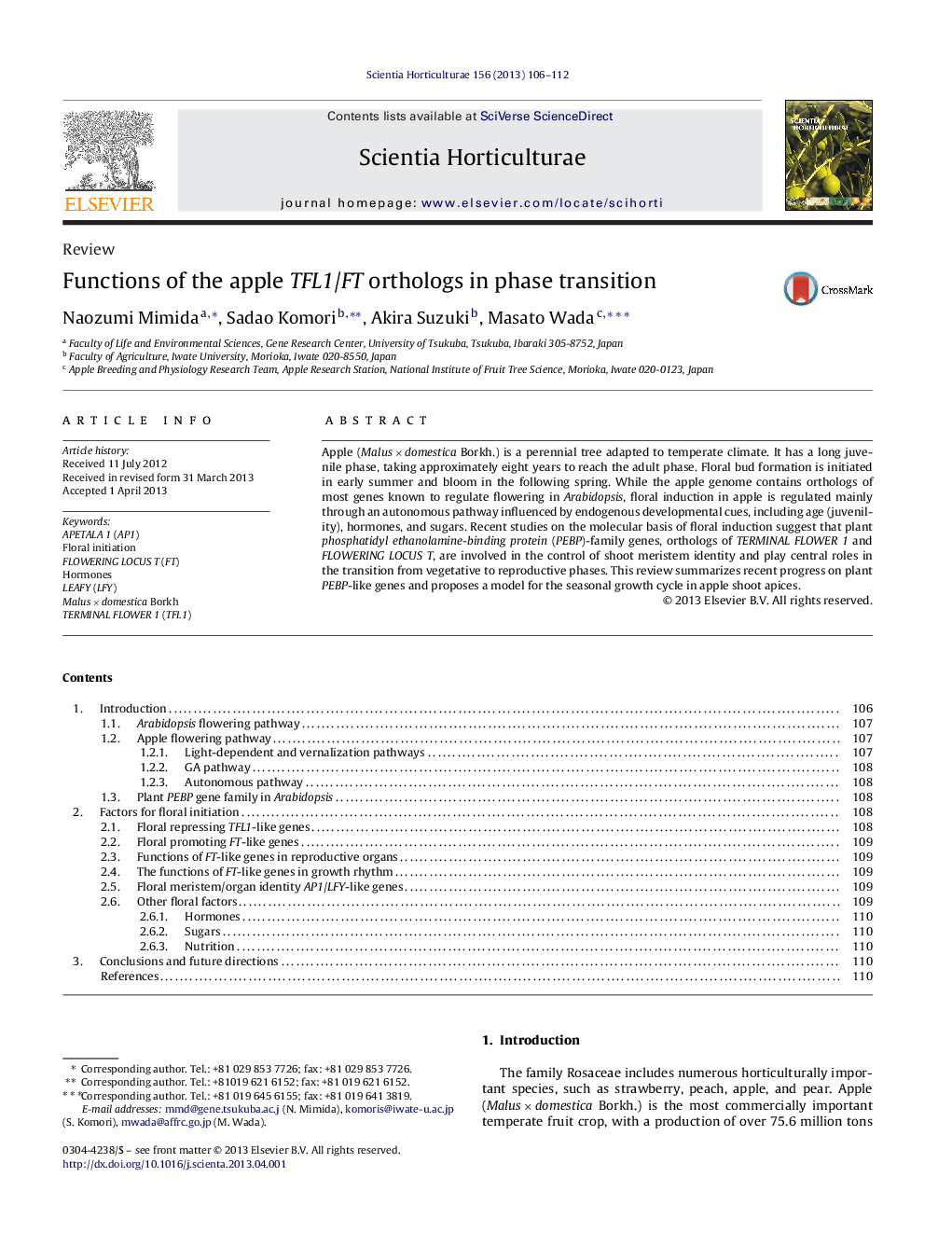| کد مقاله | کد نشریه | سال انتشار | مقاله انگلیسی | نسخه تمام متن |
|---|---|---|---|---|
| 4567319 | 1628842 | 2013 | 7 صفحه PDF | دانلود رایگان |

• We review recent literature on the genetic regulation of flower bud formation in apple.
• The main factors contributing to flowering induction are endogenous developmental cues including age (juvenility), hormones, and sugars.
• MdTFL1 and MdFT genes act as the switches for the transition from the vegetative to reproductive phase.
• High cytokinin-to-auxin ratios increase floral bud production and regulate expression of MdTFL1.
Apple (Malus × domestica Borkh.) is a perennial tree adapted to temperate climate. It has a long juvenile phase, taking approximately eight years to reach the adult phase. Floral bud formation is initiated in early summer and bloom in the following spring. While the apple genome contains orthologs of most genes known to regulate flowering in Arabidopsis, floral induction in apple is regulated mainly through an autonomous pathway influenced by endogenous developmental cues, including age (juvenility), hormones, and sugars. Recent studies on the molecular basis of floral induction suggest that plant phosphatidyl ethanolamine-binding protein (PEBP)-family genes, orthologs of TERMINAL FLOWER 1 and FLOWERING LOCUS T, are involved in the control of shoot meristem identity and play central roles in the transition from vegetative to reproductive phases. This review summarizes recent progress on plant PEBP-like genes and proposes a model for the seasonal growth cycle in apple shoot apices.
Journal: Scientia Horticulturae - Volume 156, 7 June 2013, Pages 106–112